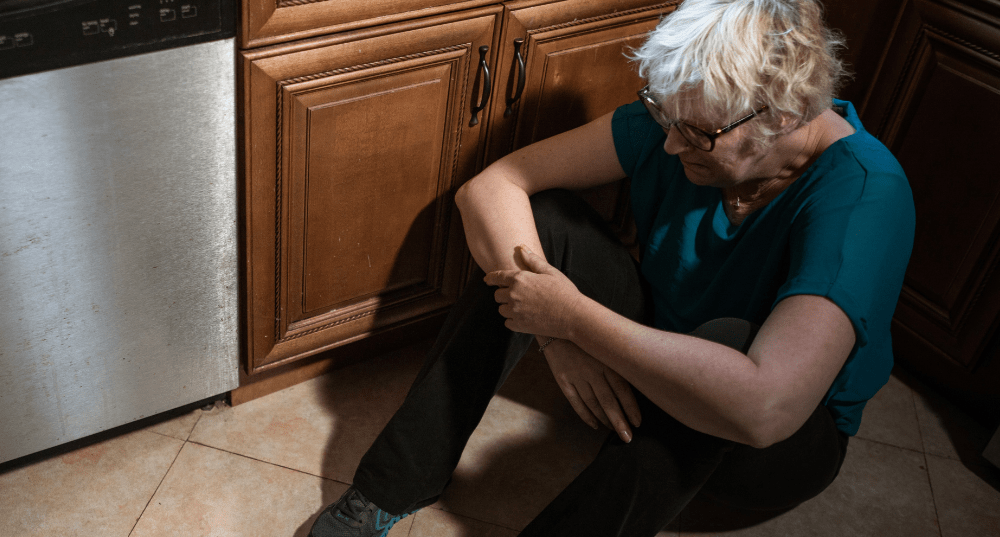Recent News
Understanding mental health illnesses, anxiety and depression and how to get help

Many are quick to assume that mental health issues get better with age. This is often because older adults tend to share their physical health issues with their friends, family, and healthcare providers rather than any mental health problems. However, parts of aging such as poor health, memory problems, frailty, financial instability and being unable to afford living expenses and medication, elder abuse (being victimized), being dependent on others, being left alone, and death can take a toll on the mental wellbeing of older adults. These mental health illnesses are draining and can reduce their overall health and quality of life. Often, older adults struggle with anxiety and depression. Anxiety and depression can be difficult to recognize.
Types of Mental Health Illness
- Generalized Anxiety Disorder (GAD): Older adults with GAD react excessively to problems or challenging situations. Symptoms include fatigue, chest pains, headaches, muscle tension, muscle aches, difficulty swallowing, trembling, twitching, irritability, sweating, nausea, lightheadedness, having to go to the bathroom frequently, feeling out of breath, and hot flashes.
- Panic disorder: An older adult with a panic disorder may refuse to be left alone. An older person experiencing a panic attack may think he or she is having a heart attack or stroke.
- Post-Traumatic Stress Disorder (PTSD): Some older adults may relive a trauma several years after an event, especially if they feel helpless due to a new age-related disability (i.e., being confined to a wheelchair) or become triggered by things like news coverage of current wars that may revive old memories.
- Obsessive-Compulsive Disorder (OCD): Though uncommon, older people do suffer from persistent, upsetting thoughts that they may control by performing certain rituals (repeatedly checking things, touching things in an order, counting things, etc.) Some with OCD are preoccupied with order and symmetry; others accumulate or hoard unneeded items.
- Phobias: The most common phobias for older adults include fear of death, disaster to family, and even dental procedures. Thinking about or having to cope with these situations can bring on severe anxiety or a panic attack as mentioned above.
What is anxiety?
Being anxious or nervous is a normal reaction to stress at all stages of life. However, when these emotions become too much and affect daily functioning, social life, and relationships, it may be an illness. About 10-20% of older adults are affected by anxiety but does not include those who haven’t been diagnosed.
Common signs and symptoms of anxiety include:
- Excessive worry or fear
- Refusing to do routine activities or being overly preoccupied with routine
- Avoiding social situations
- Overly concerned about safety
- Racing heart, shallow breathing, trembling, nausea, sweating
- Poor sleep
- Muscle tension, feeling weak and shaky
- Self-medication with alcohol, marijuana, etc.
- Hoarding and/or collecting
What is depression?
Depression is a mood disorder that causes an ongoing feeling of sadness and loss of interest. In older adults, anxiety and depression often occur together. The chance of depression increases as older adults age at a faster rate than any other age group (i.e. children, adolescents, adults).
There are two types of depression: major/clinical depression and persistent depressive disorder.
- Major depression, sometimes called clinical depression, is when the onset of the symptoms (listed below) interferes with the ability to work, sleep, eat, and enjoy life. A major episode may occur only once in a person’s lifetime, but it is not abnormal for major episodes to occur more than once.
- Persistent Depressive Disorder is a form of depression that is diagnosed when an individual experiences a depressed mood that lasts for a minimum of two years. They may have episodes of major depression along with periods of less severe symptoms, but the duration of symptoms must last for two years to fall within this category.
Common signs and symptoms of depression include:
- Disturbed sleep (sleeping too much or too little)
- Changes in appetite (weight loss or gain)
- Physical aches and pains
- Lack of energy or motivation
- Irritability and intolerance
- Loss of interest or pleasure
- Feelings of worthlessness or guilt
- Difficulties with concentration or decision-making
- Noticeable restlessness or slow movement
- Recurring thoughts of death or suicide
- Changed sex drive
What are some treatment options?
- Medication: The main medications used for anxiety disorders are antidepressants, anti-anxiety drugs, and beta-blockers, which control some of the physical symptoms. They must be prescribed by physicians – often psychiatrists or geriatric psychiatrists.
- Therapy: A therapist can teach new coping and relaxation skills and can help resolve problems through open, two-way communication. Techniques may include deep breathing and other relaxation strategies to relieve anxiety.
- Recreation & lifestyle: Practicing self-care, opening up to family and friends, exercising, and reducing the intake of stimulants like caffeine have all been attributed as good practices of anxiety and depression management.
Screening tool options
There are several tools available online that may help you self-identify the presence of a mental health condition. Listed below are some government-endorsed, evidence-based screeners. However, please consult with a health professional for an official diagnosis.
- CMHA’s Mental Health Meter: Identifies mental health strengths and weaknesses so that at-risk individuals can target wellness improvement efforts
- Here to Help Mental Wellbeing Screener: A British Columbia resource that guides individuals through an assessment to explore their mental wellbeing
- Here to Help Depression Screener: A British Columbia resource that guides individuals through an assessment to pinpoint common symptoms of depression
- Here to Help Anxiety Screener: A British Columbia resource that guides individuals through an assessment to pinpoint common symptoms of anxiety
You may also like:
